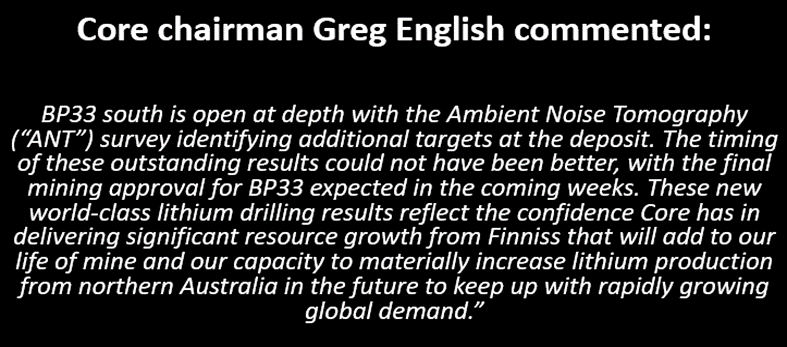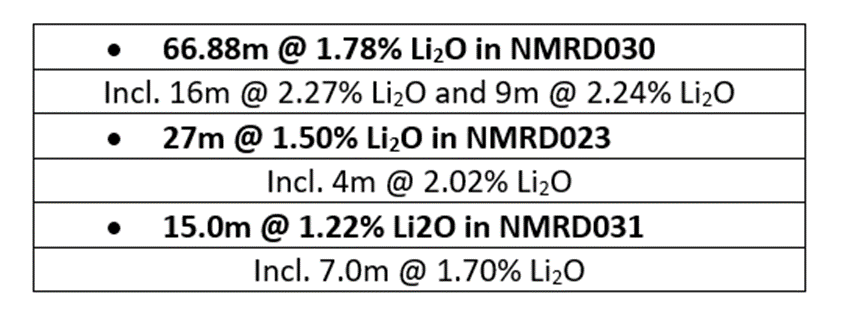Highlights
- Core Lithium's shares were trading at AU$1.16 per share, down 2.53% each on ASX at 12.12 PM AEST.
- This outperforms ASX 200 Materials index, which was 1.62% lower at 15,473.20 points at 12.33 PM AEST.
Shares of Core Lithium Ltd (ASX:CXO) were spotted trading in negative territory today (2 August) after spiking yesterday (1 August) as the lithium company shared its BP33 drilling results.
Core Lithium's shares were trading at AU$1.16 per share, down 2.53% each on ASX at 12.12 PM AEST. This outperforms ASX 200 Materials index, which was 1.62% lower at 15,473.20 points at 12.33 PM AEST. Meanwhile, the overall ASX market was also down. The ASX 200 index fell 0.54% at 6,955.40 points on Tuesday at 12.35 PM AEST.

Image Source: © 2022 Kalkine Media ®
Data Source- Company announcement dated 01 August 2022
A look at BP33 drilling results
BP33 Deposit is part of the Finniss Lithium Project near Darwin in the Northern Territory. Core Lithium informed that assays are now beginning to be received by the company following the start of diamond drilling at BP33 in May. At depths of up to 470 meters below the surface, a total of three deep diamond drill holes have intersected the major BP33 mineralisation.
The company further said that additional five diamond-drilled holes have encountered mineralized pegmatite linked with the southern BP33 deposit at depths below any prior drilling and as deep as 420 meters below the surface.
It is to be noted that the spodumene-bearing pegmatite extends deep to the south, according to the geological logging of these holes, with signs that thickness and grade may increase with depth. Even though the main and southern bodies are now modelled as discrete entities, the drilling site suggests that they are probably continuous.
Significant intersections from assays received are shown below:

Image Source: © 2022 Kalkine Media ®
Data Source- Company announcement dated 01 August 2022
ANT geophysical trial in May
To verify the method's efficacy for locating pegmatites at depth, Core Lithium hired Fleet Space Technologies to conduct a trial Ambient Noise Tomography ("ANT") scan at BP33 in May. The Finniss pegmatites have proven difficult to find using geophysical methods; therefore, the ability to target blind pegmatites is considered a significant advancement in exploration for the project.
The BP33 body, which was imaged as a low Swave velocity anomaly, showed excellent association with the pegmatite body interpreted from drilling, and the results were a resounding success. Although the study was only carried out over BP33, a number of previously undiscovered targets have come to light, and the mining firm now plans to employ the method in previously unexplored regions and prioritise prospects for drill testing. Future investigation will greatly benefit from the now-established capability to find subsurface pegmatites at significant depths (at least 500m). An economical way to provide drilling targets with information is to use ANT technology.



